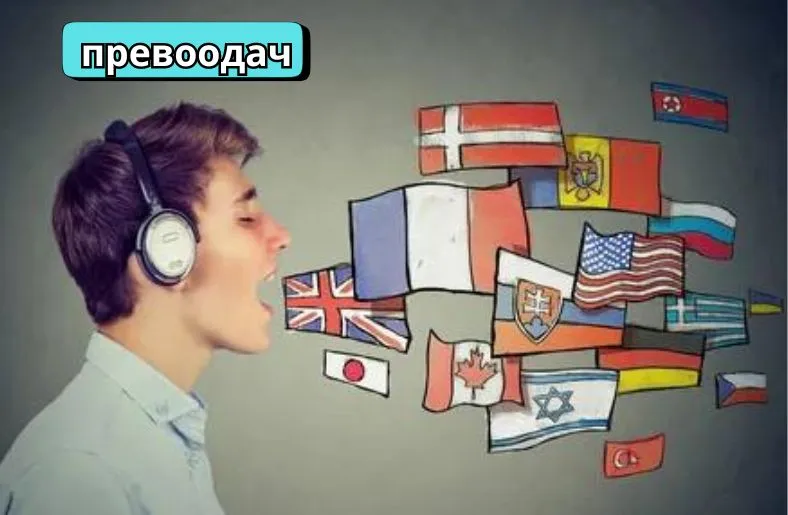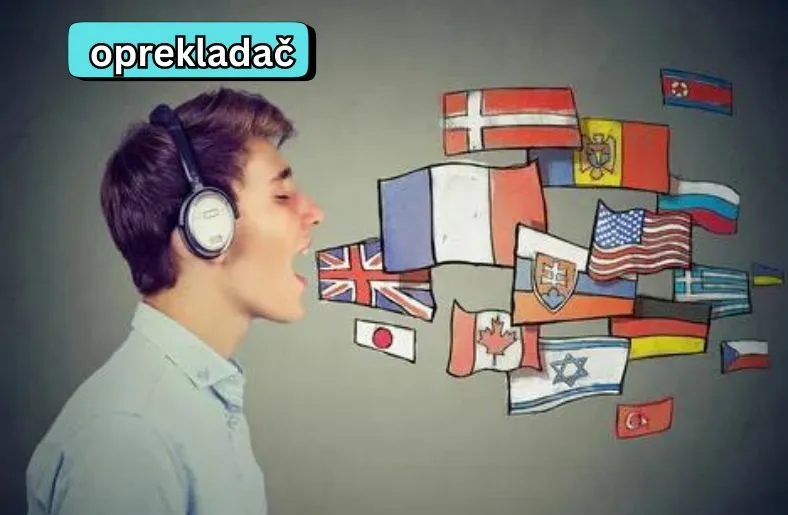Introduction
In today’s connected world, understanding different languages is essential. This is where a превоодач, or translator, becomes crucial. A превоодач helps people communicate when they speak different languages. They ensure that messages are clear and accurate in the new language.
Being a превоодач involves more than just changing words. It requires an understanding of both language and culture. A good превоодач makes sure that the message feels natural and correct in the new language. They also handle the challenge of conveying the original meaning and tone.
This blog post will explore the role of a превоодач. We will look at their skills, the challenges they face, and why human translators are still needed despite technology. Join us as we dive into the art of accurate translation and discover what makes a превоодач essential in our globalized world.
The Essential Role of a Превоодач
A превоодач, or translator, plays a vital role in today’s world. They help people understand each other across different languages. This task involves more than just translating words. A превоодач ensures that the original message’s meaning and tone are kept intact.
When a превоодач translates a document or conversation, they first need to understand the source content deeply. They then choose the right words in the target language to convey the same meaning. This process ensures that the message remains clear and accurate. For example, translating a business report requires precise language to avoid misunderstandings.
Moreover, cultural knowledge is crucial for a превоодач. Every language is tied to a specific culture, and understanding this culture helps avoid mistakes. A translator must adapt phrases or idioms that don’t translate directly. This way, the content feels natural and relevant to the target audience.
A good превоодач also works to ensure that the translated text matches the tone and style of the original. Whether it’s a formal business document or a casual conversation, they adjust their approach accordingly. This careful attention to detail helps in maintaining the essence of the original message.
In summary, a превоодач is essential for bridging language gaps. They help people connect by ensuring that communication is both accurate and culturally appropriate. Their work supports clear understanding and effective interaction in our diverse world.
Key Skills of an Effective Превоодач
To be an effective превоодач, certain key skills are crucial. First and foremost, linguistic proficiency is essential. A good превоодач must master both the source and target languages. This means knowing grammar, vocabulary, and common phrases in both languages. Without this skill, translations can be inaccurate or unclear.
Cultural understanding is another important skill. Every language comes with its own cultural context. A skilled превоодач knows these cultural nuances and can adapt the message accordingly. This helps avoid errors that can occur when translating idioms or cultural references.
Research abilities are also vital. Sometimes, a превоодач needs to look up unfamiliar terms or concepts. This research ensures that the translation is accurate and contextually appropriate. It helps the translator provide a clear and precise message.
Attention to detail is crucial as well. Even small mistakes can change the meaning of a text. An effective превоодач checks their work carefully to ensure it is free from errors. This meticulous approach helps maintain the quality of the translation.
Technical skills are becoming increasingly important too. Many translators use computer-assisted tools to help with their work. Familiarity with these tools can make the translation process faster and more efficient.
Lastly, creativity plays a role, especially in literary translations. A good превоодач must find ways to express ideas in an engaging manner. They should preserve the original author’s style while making the text appealing in another language.
In summary, an effective превоодач needs a blend of linguistic skills, cultural knowledge, research abilities, attention to detail, technical proficiency, and creativity. These skills ensure that translations are accurate, culturally sensitive, and engaging.
Challenges Faced by Превоодачи
Being a превоодач comes with unique challenges. One major issue is dealing with language ambiguity. Words often have multiple meanings. A превоодач must carefully understand the context to choose the correct meaning. Without this, translations can be confusing or misleading.
Cultural differences also pose significant challenges. Each culture has its own expressions and traditions. Translating these accurately requires a deep understanding of both cultures. Misinterpreting cultural nuances can lead to errors and misunderstandings.
Another challenge is handling technical jargon. Specialized fields like medicine or law use specific terms. A превоодач needs to be familiar with these terms or do thorough research. This ensures that the translation is accurate and professional.
Maintaining the author’s voice can be difficult too. Every writer has a unique style. A превоодач must capture this style while translating into another language. This balance is tricky but essential for a natural and engaging translation.
Time constraints often add to the pressure. Clients frequently need translations done quickly. A превоодач must work efficiently to meet deadlines without compromising quality. This can be stressful, especially with complex or lengthy texts.
Finally, technology can be both a help and a hindrance. While translation tools are useful, they are not perfect. A skilled превоодач knows when to rely on their expertise rather than machine translation. Balancing technology with human insight is crucial.
In summary, превоодачи face challenges like language ambiguity, cultural differences, technical jargon, maintaining the author’s voice, tight deadlines, and balancing technology with human judgment. Overcoming these challenges ensures that translations are accurate and effective.
The Importance of Human Translators
Human translators are vital in today’s world, despite advancements in technology. Machines can translate text, but they often miss important details. A human превоодач understands context, which is crucial for accurate translations. This context includes the tone, intent, and subtle meanings behind the words.
Moreover, human translators grasp cultural nuances. They know that words can have different meanings in various cultures. This awareness helps avoid misunderstandings and ensures that translations are appropriate for the target audience. For example, a joke in one culture might be confusing or even offensive in another. A skilled превоодач can navigate these differences expertly.
Creativity is another key aspect of human translation. In literary translations, for instance, a human translator conveys emotions and style. Machines lack the ability to capture the author’s voice and emotional depth. Therefore, human input is essential for translations that feel natural and engaging.
Furthermore, human translators excel in maintaining the author’s unique voice. Every writer has a distinct style that reflects their personality and message. Translating this style accurately requires a deep understanding of both languages and a keen sensitivity to the author’s tone. Machines often struggle with this level of nuance.
Finally, human translators handle time pressures effectively. They can prioritize tasks and meet tight deadlines while ensuring high-quality work. Unlike machines, which may produce errors under stress, skilled translators manage their workload efficiently and accurately.
In conclusion, human translators play an irreplaceable role in translation. Their understanding of context, cultural nuances, creativity, and ability to maintain the author’s voice make them essential. While technology assists, it cannot replace the depth and quality of human expertise.
Best Practices for Working with a Превоодач
To get the best results from a превоодач, follow these best practices. First, be clear about your needs. Explain the purpose and context of the translation. Providing details helps the translator understand what you want and deliver better results.
Second, share any specific instructions. Let the translator know about any special terms or preferred styles. This information is crucial for ensuring the translation fits your needs perfectly.
Next, maintain open communication. Keep in touch with the translator throughout the process. This way, you can address any questions or concerns quickly. Regular updates help avoid misunderstandings and ensure that the project stays on track.
Additionally, provide feedback on drafts. If the translator gives you a draft, review it carefully. Share your thoughts and suggestions to improve the final translation. Constructive feedback helps the translator adjust and refine their work.
Another important practice is to respect deadlines. Give the translator enough time to complete the work. Rushing can lead to mistakes and lower quality. By respecting deadlines, you help ensure the translator has time to deliver a polished final product.
Lastly, consider confidentiality. If the content is sensitive, make sure the translator agrees to keep it private. Confidentiality is crucial for protecting your information and maintaining trust.
In summary, clear communication, specific instructions, regular feedback, respecting deadlines, and confidentiality are key to working effectively with a превоодач. Following these practices will help ensure you get high-quality translations that meet your needs.
Conclusion
In a world where effective communication spans across languages, a превоодач plays a vital role. Their expertise in language and culture bridges gaps, ensuring messages are clear and accurate. Despite advances in technology, human translators remain essential for their ability to grasp nuance and context. By mastering key skills and overcoming challenges, they deliver translations that are both precise and culturally relevant. Following best practices when working with a превоодач helps achieve high-quality results. Embracing the art of translation enhances global understanding and fosters meaningful connections across diverse cultures.




